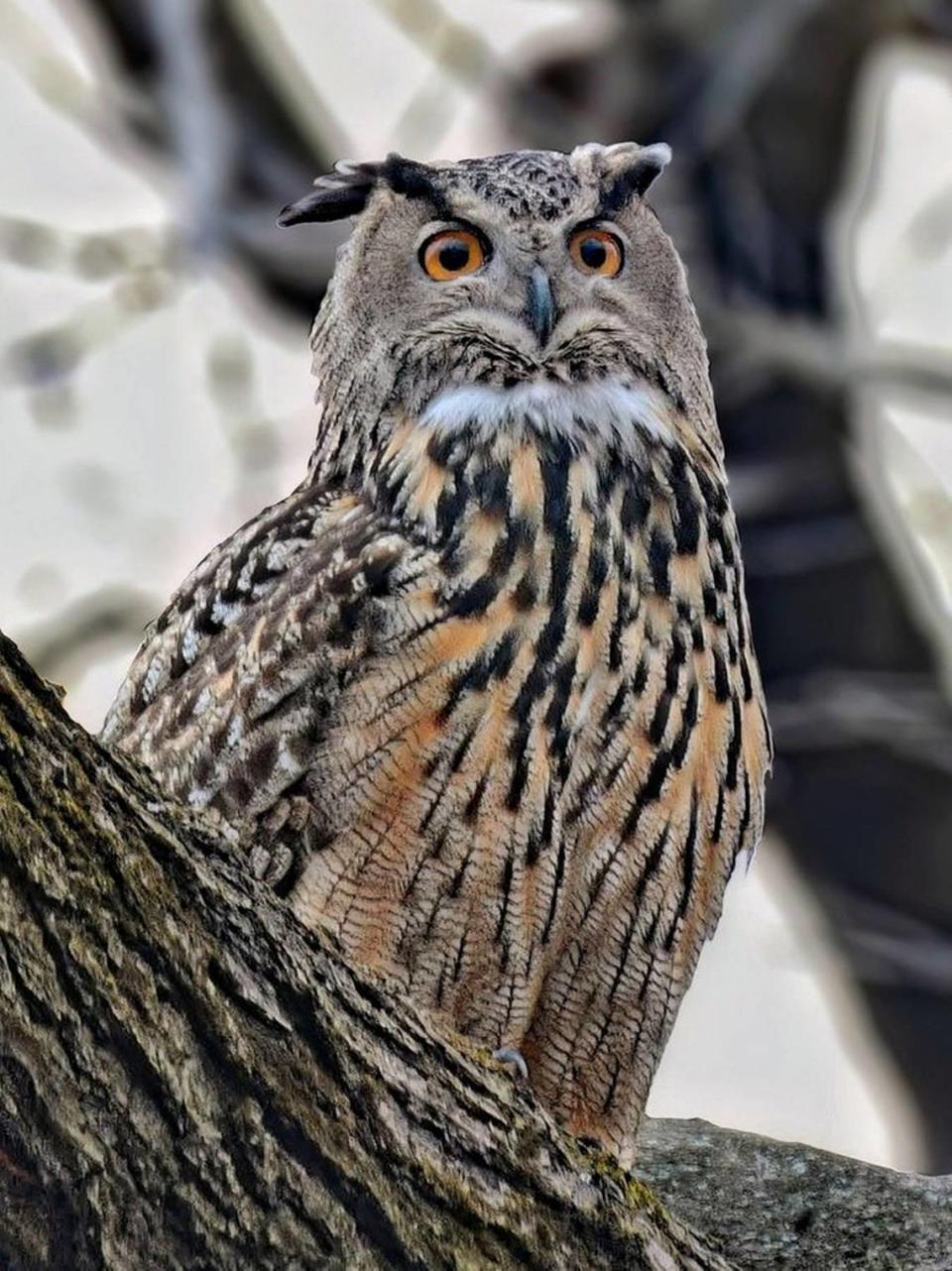NC-born Flaco the owl is now NYC’s internet-famous ‘peeping Tom.’ What he’s up to
After more than a decade of having patrons stare at him in his Central Park Zoo enclosure, Flaco the owl is now gawking at New Yorkers in theirs.
Flaco is a Eurasian eagle-owl hatched in 2010 at Sylvan Heights Bird Park in Scotland Neck, in northeastern North Carolina. He was sent as a fledgling to Central Park and lived at the zoo there until February, when a vandal snipped the wire of his enclosure and he took flight.
Zookeepers tried to recapture him with bait and bird calls, but gave up after a few weeks when they observed him swooping down to snag a rat for dinner, allaying their fears that he couldn’t survive in the big city alone.
Flaco — pronounced FLAH-ko — is now believed to be the only Eurasian eagle-owl in the wild in North America.
Why is Flaco back in the news?
In the weeks after his unsanctioned release, Flaco drew crowds of onlookers who stared into the trees whenever he perched on a branch, a building or a parked piece of heavy equipment. His movements were tracked on social media as he explored Central Park, ventured beyond it, and then seemed to settle back there.
After a flurry of national coverage in the spring, Flaco news through the summer mostly was relegated to fan photos on his FlacoTheOwl X (formerly Twitter) page and updates by local birding groups such as Manhattan Bird Alert.
But nobody stays a celebrity forever in New York.
Then this week, the Wall Street Journal published a story accusing Flaco of becoming a Peeping Tom, “a true nosy New Yorker” who has been spotted outside people’s windows with his satellite dish of a face to the glass, the better to see inside. Sometimes he’s only slightly farther away, on a fire escape or window-unit air conditioner.
One resident told the paper Flaco sat outside her kitchen window, on the 13th floor, for three hours. She talked to him, she said. But when she came too close to the window, he hissed.
Peering into their souls
Apparently it’s a moving experience to look into the eyes of a Bubo bubo, Flaco’s species name. Those orbs, if scaled up to human proportions, would be as big as grapefruits. And they’re they color of pumpkins.
“He is a beautiful owl and his orange eyes are quite a sight when wide open and facing you!” said the administrator of the Manhattan Bird Alert account, a frequent Flaco photographer.
Flaco also stands out for his girth. Eagle-owls are among the largest of owls, with adults measuring 2 feet tall. Males can weigh more than 6 pounds, females 9 pounds. When threatened, they can look even bigger because they fluff their feathers and the tufting on their heads stands up.
They can have a wing span as wide as a couch.

How is Flaco doing?
“He seems to be thriving,” said Rob Vernon, a spokesman for the Association of Zoos and Aquariums based in Silver Spring, Md. The AZA oversees the captive breeding program for Eurasian eagle-owls in North America, which had 134 birds — including Flaco — at 63 institutions in 2017.
Eagle-owls are native to much of Europe, Asia and northern Africa, and the Peregrine Fund says they do well in most habitats. The species was first imported into North America in 1959 by the San Diego Zoo after their numbers in other parts of the world had declined from hunting, intentional poisoning and accidental deaths.
Since Flaco has proved his prowess as a bird of prey, Audubon has said he might pose a threat to other bird species in Central Park and the greater Manhattan area, given his size and strength. The organization also notes the possibility that Flaco could crash into a skyscraper, get hit by a car or suffer long-term poisoning by ingesting pesticide-laden rodents.
As Flaco has no doubt been learning: It’s a concrete jungle out there.


